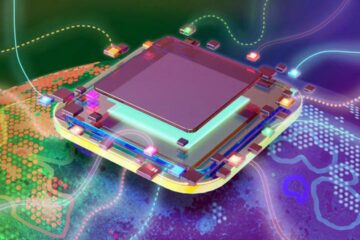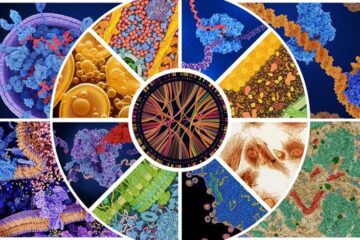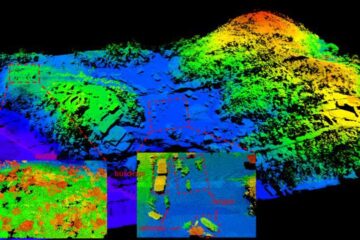Student creating polymers to chaperon DNA across cell membrane

Ordinarily, the cell membrane prevents invasion by foreign genetic material, which is why genetic engineers often have to use a pipette and forced air to jab a new piece of a gene through the cell wall into the genome in order to carry out gene therapy or introduce particular attributes into a crop or organism.
But an undergraduate student at Virginia Tech has figured out how to chaperone DNA across cell membranes. Amanda Rudisin of Lucinda, Pa., a senior in biology, will present her team’s research at the 227th annual meeting of the American Chemical Society in Anaheim, Calif., March 28 through April 1, 2004.
Rudisin’s research looked at linear versus branched molecules in terms of chaperone ability, explains Timothy Long of Blacksburg, professor of chemistry in the College of Science at Virginia Tech. “The poster presents findings regarding the effects of polymer structures on complexation with DNA. Amanda has explored a novel way to transport DNA across cell membranes,” says Long. “She looks at the effect of the chemical structure of a gene transfer agent in a very fundamental way. The agent is a polymer that adheres to DNA and will cross the cell membrane.”
The poster, “Effects of topology upon transfection efficiency: Synthesis, characterization, and transfection of poly-2-(dimethylamino)ethyl methacrylate and poly-2-(dimethylamino)ethyl methacrylate-co-polyethylene glycol-dimethacrylate (Poly 432),” will be presented 6 to 8 p.m. Tuesday, March 30, in the Anaheim Convention Center Hall A as part of the Division of Polymer Chemistry’s program on Biomacromolecule Interactions with Synthetic Surfaces. Co-authors are Rudisin, three Virginia Tech professors, Willard H. Eyestone in the Department of Large Animal Clinical Sciences, William R. Huckle in the Department of Biomedical Science, and Long. Eyestone and Huckle are in the Virginia-Maryland Regional College of Veterinary Medicine.
Contact for additional information:
Tim Long, telong@vt.edu, (540) 231-2480
Will Eyestone, weyest@vt.edu, (540) 231-4834
Amanda Rudisin, arudisin@vt.edu
Media Contact
More Information:
http://www.technews.vt.edu/All latest news from the category: Life Sciences and Chemistry
Articles and reports from the Life Sciences and chemistry area deal with applied and basic research into modern biology, chemistry and human medicine.
Valuable information can be found on a range of life sciences fields including bacteriology, biochemistry, bionics, bioinformatics, biophysics, biotechnology, genetics, geobotany, human biology, marine biology, microbiology, molecular biology, cellular biology, zoology, bioinorganic chemistry, microchemistry and environmental chemistry.
Newest articles

A universal framework for spatial biology
SpatialData is a freely accessible tool to unify and integrate data from different omics technologies accounting for spatial information, which can provide holistic insights into health and disease. Biological processes…

How complex biological processes arise
A $20 million grant from the U.S. National Science Foundation (NSF) will support the establishment and operation of the National Synthesis Center for Emergence in the Molecular and Cellular Sciences (NCEMS) at…

Airborne single-photon lidar system achieves high-resolution 3D imaging
Compact, low-power system opens doors for photon-efficient drone and satellite-based environmental monitoring and mapping. Researchers have developed a compact and lightweight single-photon airborne lidar system that can acquire high-resolution 3D…





















